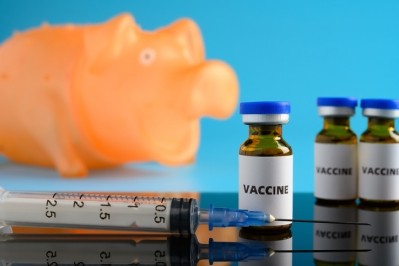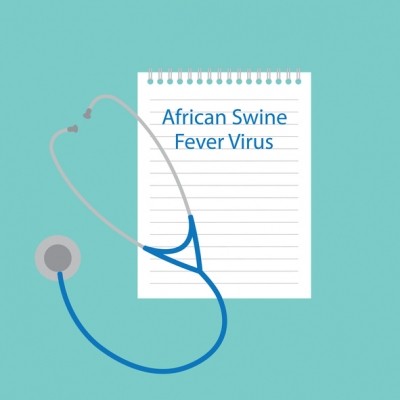What approach is needed to prevent the entry of ASF into North America and other markets?

Although scientific evidence indicates that ASFV is very resilient in the environment, especially in infected pig tissues and meat products, and can survive in some feed ingredients if they become contaminated with the virus, the major unknown is the extent of ASFV contamination and its viability in feed ingredients because there is no global or national feed diagnostic or surveillance systems, argue the researchers in that paper.
The authors are all based at the University of Minnesota.
Because of the unknown prevalence and infectivity of ASFV in feed supply chains, the US feed and pork industry, in particular, and the North American feed industry, in general, has adopted a proactive and a more risk-averse approach to scrutinizing countries of origin of some types of feed ingredients.
However, the reviewers, including Professor Gerald Shurson from the Department of Animal Science at that US university, say that using a more holistic approach to evaluating the relative risks of ASFV contamination in feed supply chains may be helpful for understanding critical control points for developing biosecurity programs to prevent the introduction of ASFV into North America and other countries that are currently free of the virus.
We ran a Q&A with Prof Shurson to find out more.
FeedNavigator: What is a holistic approach to evaluating relative risks of ASFV contamination in feed supply chains?
Gerald Shurson: Simply showing that ASFV can survive in a specific feed ingredient does not infer anything about the likelihood of contamination or capability of the virus in causing infection if a contaminated ingredient is fed to pigs. Several previous published 'risk assessment' studies have suggested that feed may serve as a potential source of ASFV transmission without indicating that there are differences among types of feed ingredients or providing the level of uncertainty in the assessment. For example, ASFV has been shown to survive for a significant period of time when artificially inoculated in soybean meal, but no studies have been conducted to evaluate whether ASFV survives in grains or other oilseed meals. Does this mean that we should not wonder about ASFV survival in corn or wheat or rapeseed meal if a source becomes contaminated? I think not, but the point is that we need to think more broadly about potential hazards for each type of feed ingredient being imported and used in swine feeds.
Certainly, the lack of data on the prevalence of ASFV contamination in various feed ingredient supply chains has prevented researchers from accurately quantifying the probability of contamination. In view of this, we have provided some specific considerations to qualitatively assess potential relative risk of contamination in various feed ingredient supply chains. Some of these factors include 1) ASFV status in country of origin, 2) quantities and frequency of imports, 3) porcine vs. non-porcine derived, 4) organic vs. conventional, 5) bulk vs. packaged, 6) extent of thermal processing, and 7) the use of process control and third-party certification. We also describe what is known about potential hazards in vitamin, amino acid, mineral, and feed additive supply chains, as well as feed fraud, which have rarely been discussed in previous published studies, webinars, and other industry communications.
FEN: What are the critical control points for developing biosecurity programs to prevent introduction of ASFV into North America and other ASFV-free countries?
GS: We need to think more about how the food industry attempts to prevent and control microbiological contamination of foods when we think about developing biosecurity protocols for feed ingredients. To do this, a higher level of biosecurity could be achieved by implementing Hazard Analysis and Risk-based Preventive Controls at various steps along the feed supply chain. For example, if a raw material must be imported from an ASFV-positive country, are there biosecurity standard operating procedures in place that focus on Good Agricultural Practices, Good Handling Practices, Good Manufacturing Practices, Sanitary Transport, and Good Warehousing Practices? Documenting, auditing, and verifying compliance with relevant biosafety procedures in these areas could greatly improve our ability to prevent transboundary transmission of foreign animal diseases like ASF.
Documenting the time and temperature exposure in various feed ingredient manufacturing, transport, and storage steps will be useful for assessing potential for some ASFV inactivation. Sanitary transport is another key control point. A recent study evaluating ASFV contamination showed that the virus contamination in trucks was relatively high even after cleaning and disinfection, which suggests sanitary transport needs to be a key focus for biosecurity protocols.
FEN: The review stresses how studies that show MCFA, GML, and formaldehyde as chemical mitigants in ASFV-contaminated feed are effective in reducing that viral content in feed should be treated with caution – do researchers and producers of these products agree with your interpretation?
GS: We acknowledged up front in the introduction that ‘there are many knowledge gaps and controversial opinions related to virus characteristics and replication, tenacity and virus inactivation, etc.’, but we also indicated that ‘it is imperative to re-evaluate old dogmas and rapidly adopt new knowledge as it becomes available because new discoveries are rapidly emerging, and they are changing the way we think about the prevention, control, detection and mitigation of ASFV.’
There are different ways of measuring virus inactivation by different laboratory methods, and the meaning of the results also varies in terms of virus survival, (not viable or infectious), viability (viable but not infectious) and infectiousness (viable and able to infect a host). Although researchers and practitioners have good intentions, there is sometimes a lack of complete understanding of measures derived from different assays and their accuracy regarding the extent of virus inactivation, which has often led to misinterpretation and misunderstanding of data.
For example, conventional PCR assays are commonly used to quantify the amount of ASFV DNA present in a sample, but this testing methodology is incapable of distinguishing between viable (intact particles) and free DNA (damaged) or assessing the infectivity of the viable virus particles. These are important distinctions that need to be recognized if we are going to achieve the goal and have confidence that a chemical mitigant will truly inactivate enough virus in a contaminated feed ingredient to prevent infection in pigs.







